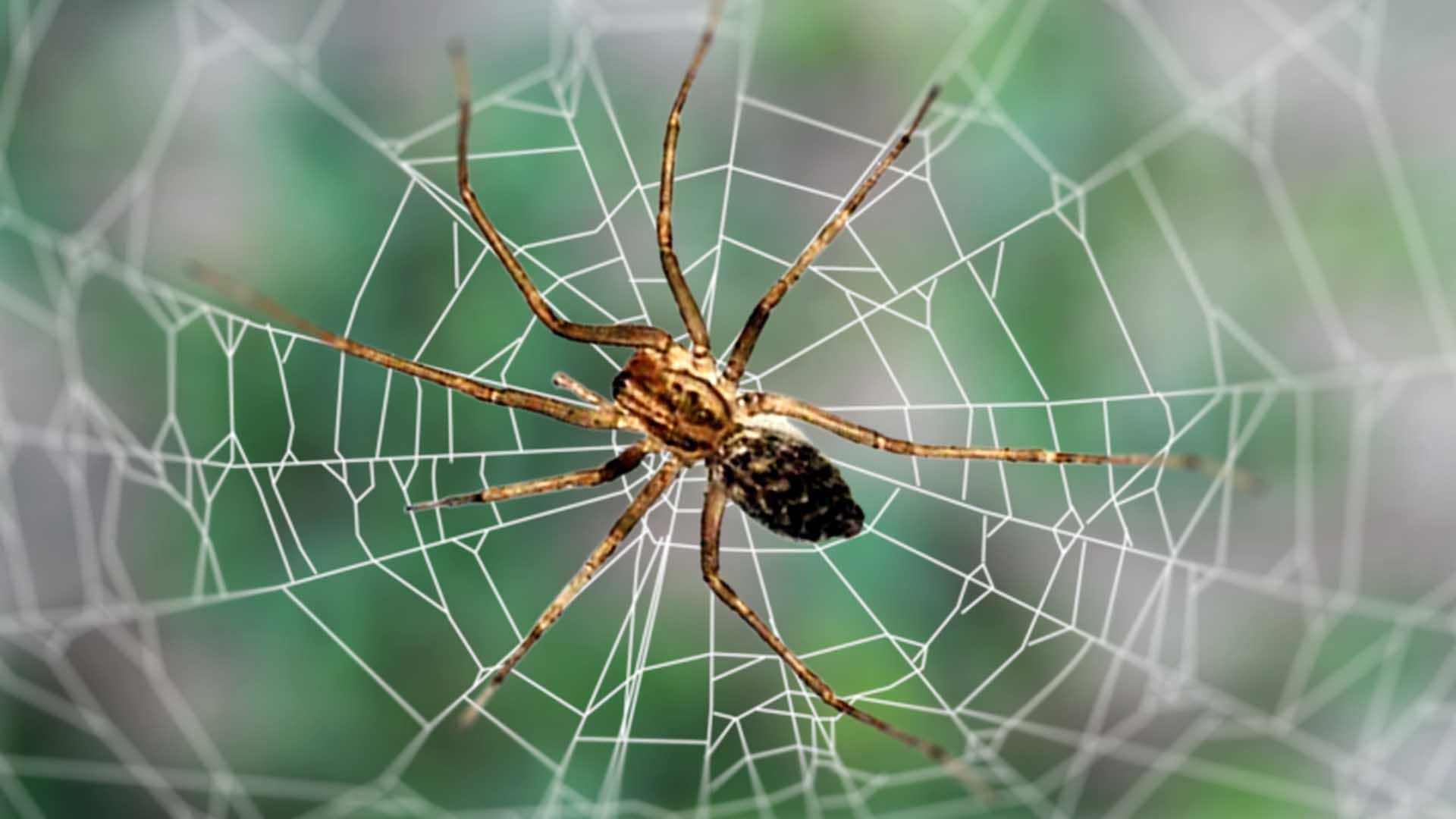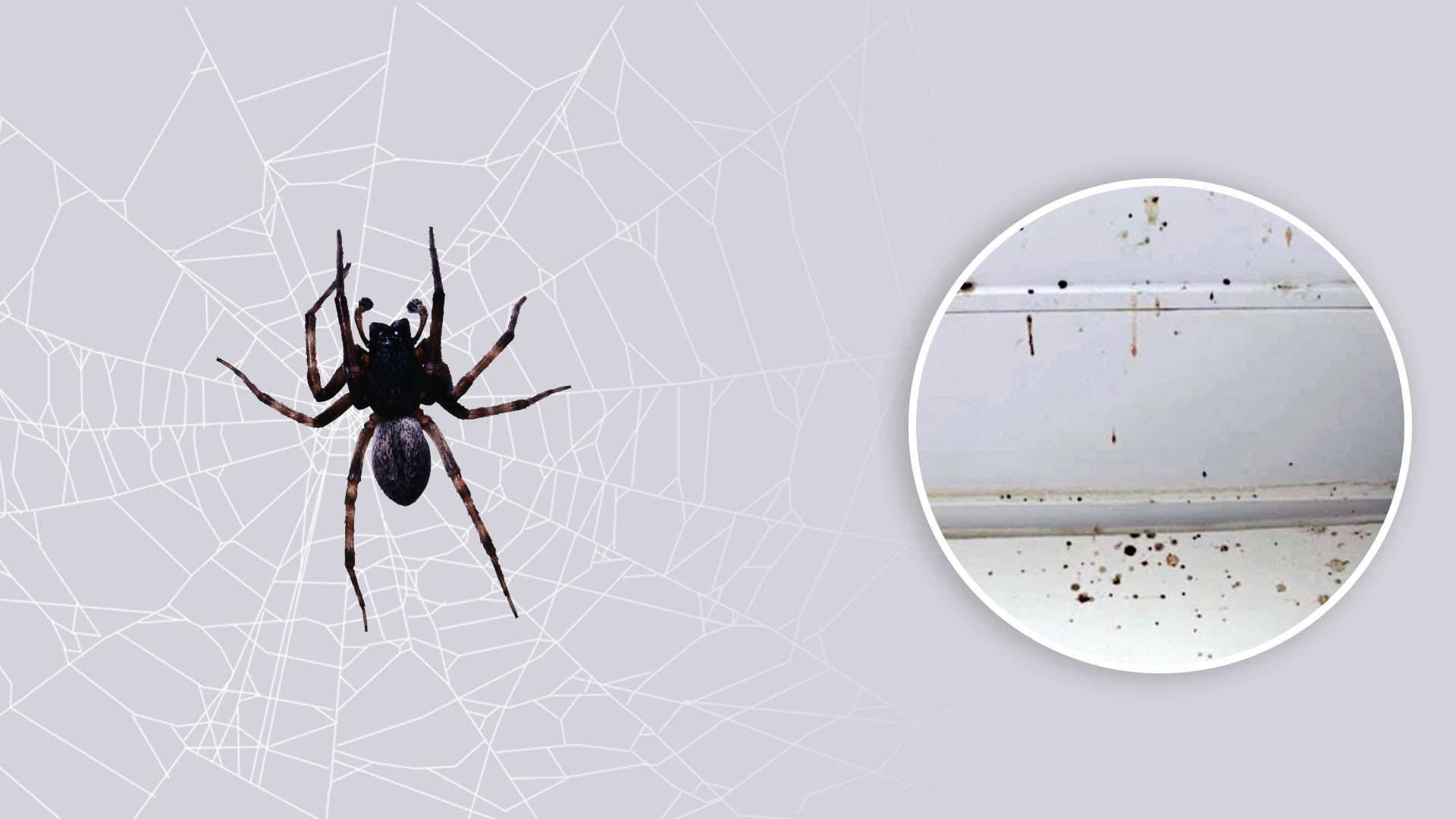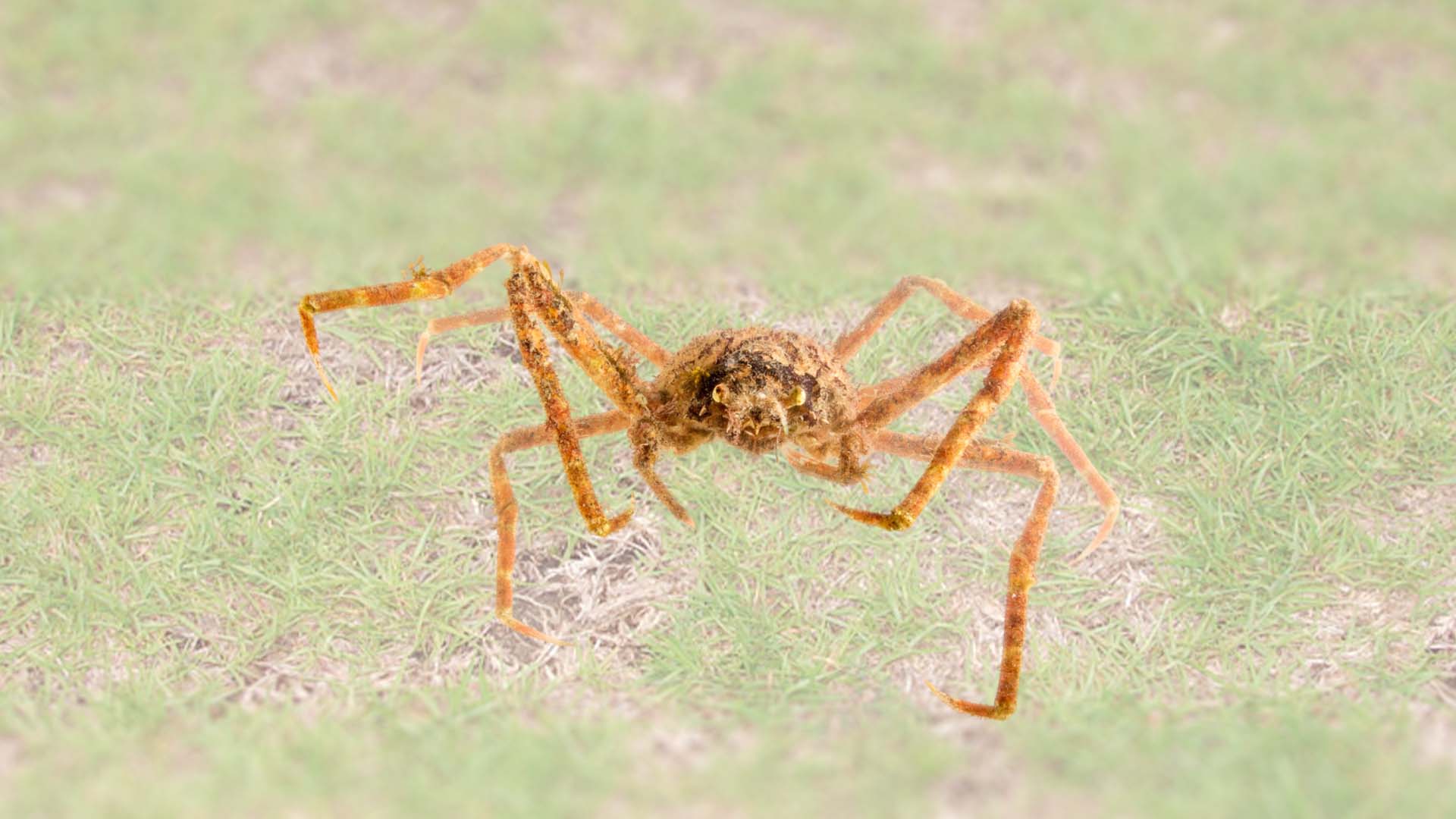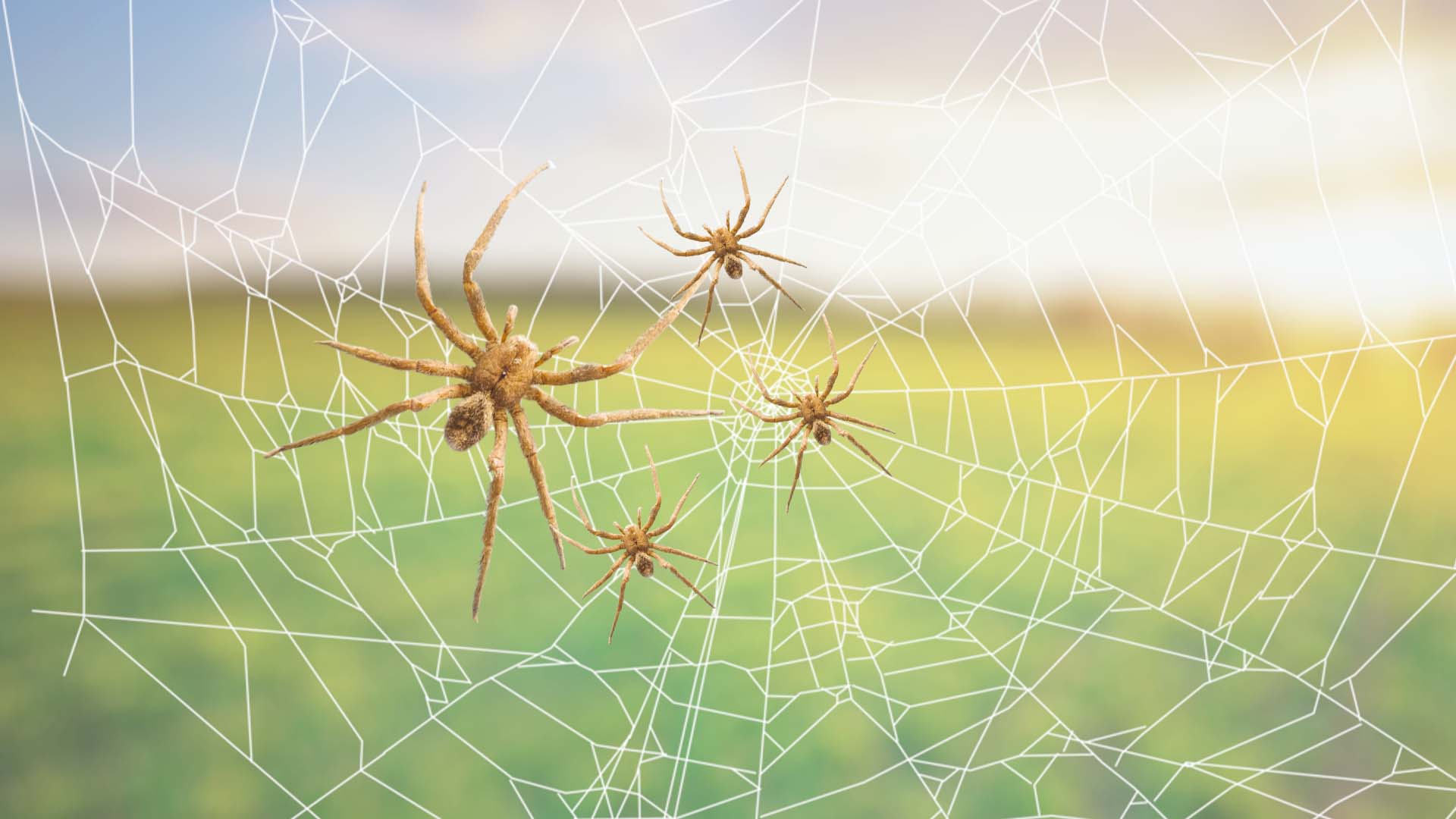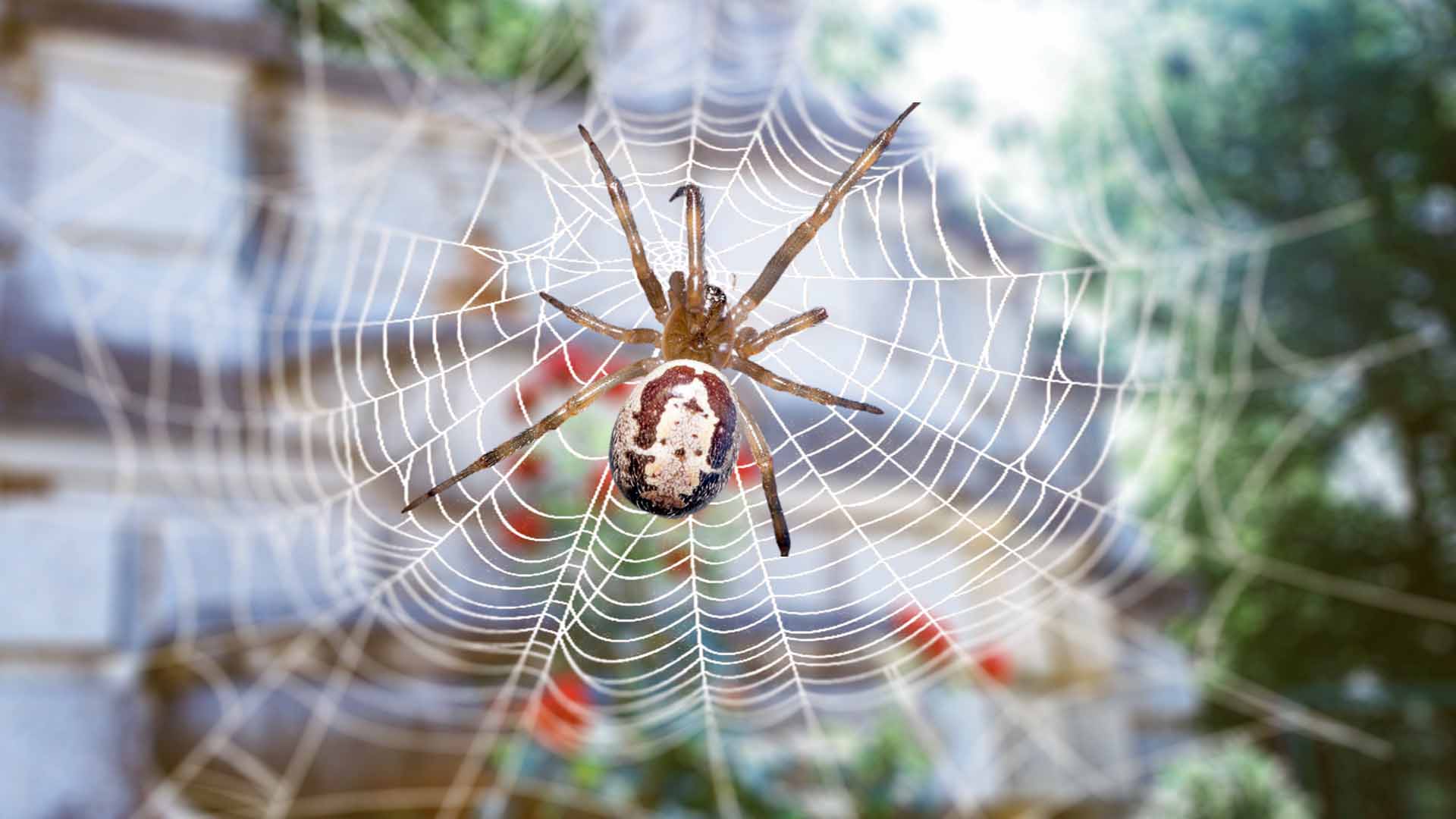Nature is a masterful artist, painting its canvas with a diverse array of creatures, each with its own unique features and characteristics. Among these fascinating creatures are the seven brown spiders with black stripes on their backs, a group that showcases the intricacies of evolution and adaptation.
In this article, we delve into the captivating lives of these spiders, exploring their habits, habitats, and distinctive traits.
7 Brown Spiders With Black Stripes on Back
There are seven brown spiders with black stripes on the beak: the Wolf Spider, Striped Fishing Spider, Banded Garden Spider, Zebra Spider, Thick-Legged Sac Spider, Woodlouse Spider, and Giant House Spider. Each of these arachnids offers a unique perspective on the complexity and beauty of the natural world.
Wolf Spider
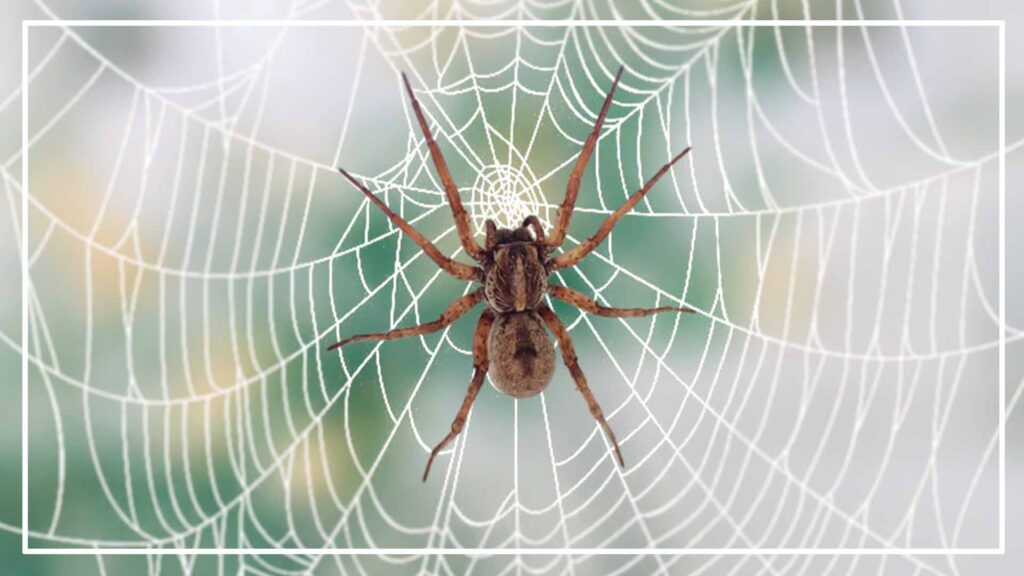
The Wolf Spider is an emblem of agility and cunning. With their distinct brown bodies adorned with black stripes, they are efficient predators that do not spin webs to catch their prey. Instead, they rely on their exceptional eyesight and speed to chase down insects.
These spiders are often found on the ground, lurking in leaf litter or burrows. Mothers are especially noteworthy as they carry their egg sacs attached to their abdomens, ensuring the safety of their offspring until they hatch.
While their appearance might be intimidating, Wolf Spiders are an essential component of the ecosystem’s balance.
Wolf Spider (Lycosidae):
- Size: Varies, typically ranging from 0.4 to 1.4 inches (1 to 3.5 cm).
- Color: Brown body with black stripes, round abdomen.
- Diet: Carnivorous; preys on insects.
- Habitat: Found in a variety of habitats, including grasslands, forests, and gardens. Often burrows in soil or hides under debris.
- Behavior: Fast runners; can bite if threatened. Eight eyes, with two prominent eyes on the top row and six smaller ones underneath.
Striped Fishing Spider
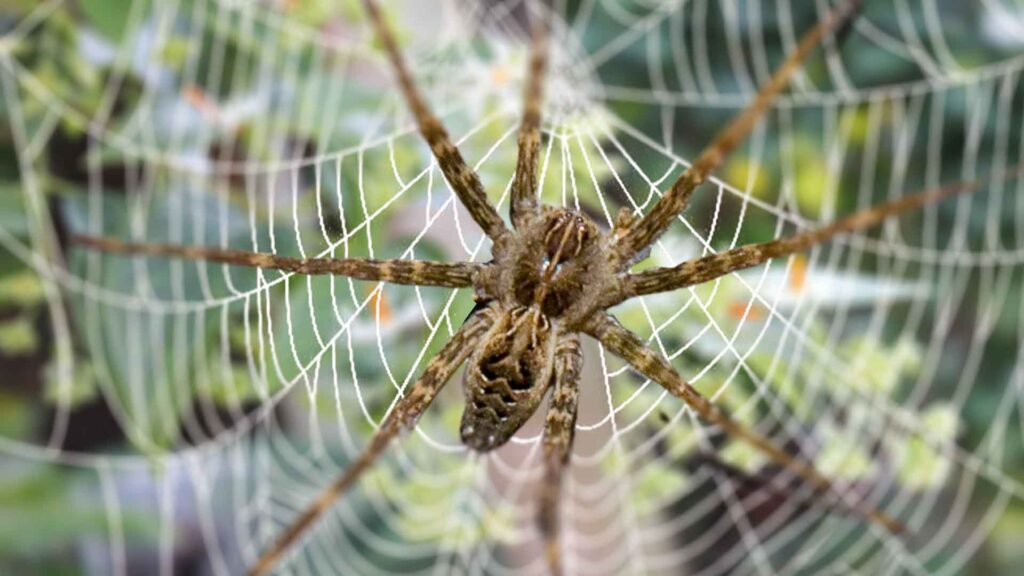
The Striped Fishing Spider is a spectacle of nature often spotted near water bodies. Their brown bodies with black stripes serve as excellent camouflage as they rest on leaves or float on the water’s surface, waiting to ambush unsuspecting aquatic insects.
Unlike other spiders, they have the ability to walk on water, aided by tiny hairs on their legs that trap air bubbles. This ingenious adaptation aids them in hunting and evading predators. These spiders showcase the diversity of arachnid strategies in different habitats.
Striped Fishing Spider (Dolomedes scriptus):
- Size: Large, with a body length of approximately 1 to 1.5 inches (2.5 to 3.8 cm).
- Color: Brown body with white bands and black stripes on the back.
- Diet: Predatory; feeds on aquatic insects and small fish.
- Habitat: Commonly found near water bodies such as ponds, streams, and marshes. Skilled swimmers.
- Behavior: Not aggressive; rarely bites.
Banded Garden Spider
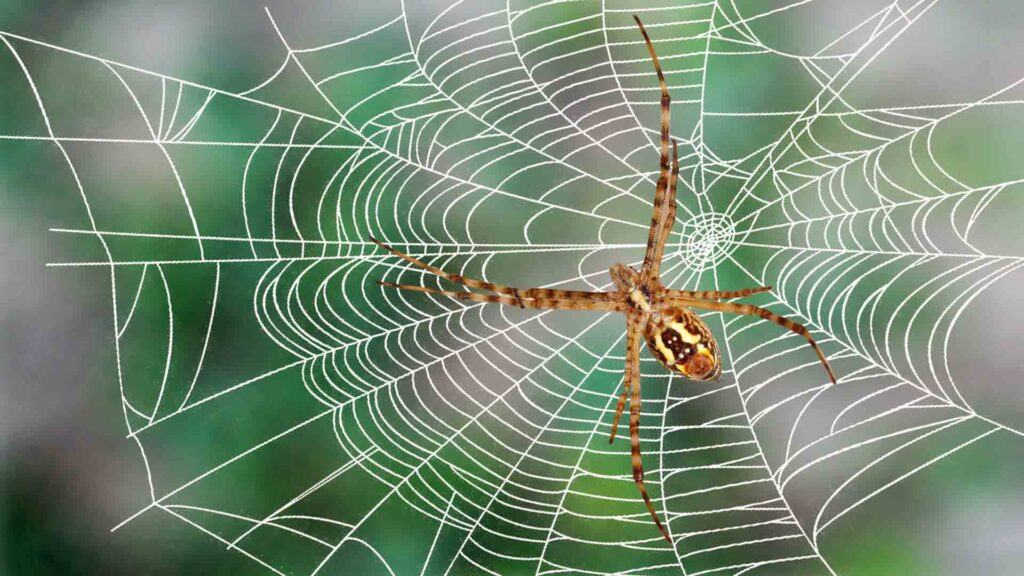
In gardens and meadows, the Banded Garden Spider weaves its intricate orb webs, a marvel of engineering. While its abdomen boasts the characteristic brown hue and black stripes, its legs are adorned with vibrant yellow and black bands.
The female is significantly larger than the male and is often found at the center of her web, waiting patiently for insects to become ensnared. Known for their aesthetic appeal and role in controlling insect populations, Banded Garden Spiders are a welcome presence in outdoor spaces.
Banded Garden Spider (Argiope trifasciata):
- Size: Medium-sized, with a body length of around 0.5 to 1 inch (1.3 to 2.5 cm).
- Color: Brown body with black bands on the abdomen.
- Diet: Carnivorous; catches insects in its web.
- Habitat: Gardens, fields, and meadows. Builds a distinctive zigzag-patterned web.
- Behavior: Passive and non-aggressive. The striking web pattern helps attract prey.
Zebra Spider
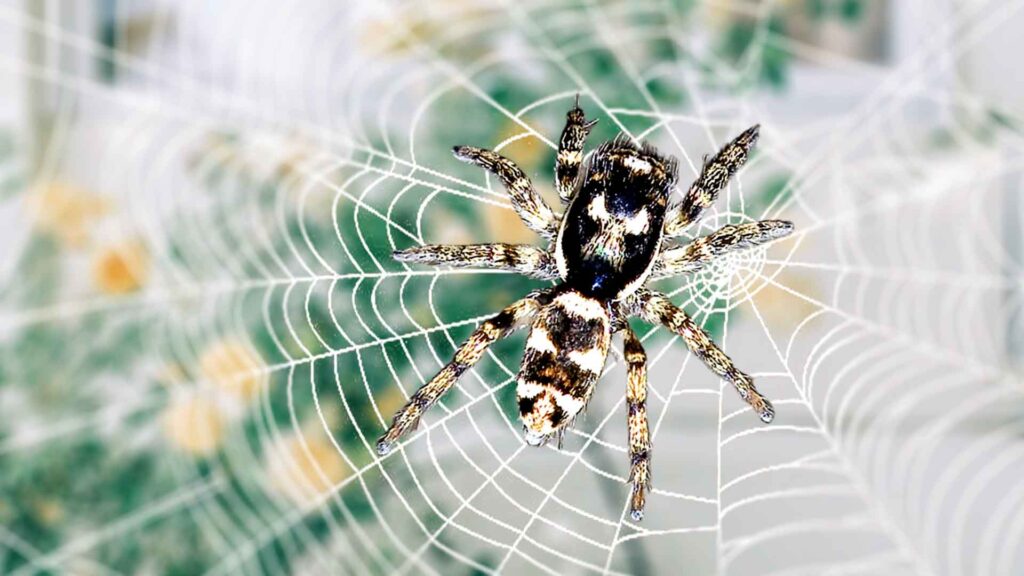
The Zebra Spider is a diminutive member of the brown spider group, but no less captivating. With its black and white stripes adorning its cephalothorax, this spider stands out for its jumping prowess.
Zebra Spiders have excellent vision, allowing them to track and pounce on their prey with remarkable accuracy. Their agility and vibrant appearance make them a favorite subject for macro photographers and nature enthusiasts alike.
Zebra Spider (Salticus scenicus):
- Size: Small, with a body length of about 0.1 inch (2.5 mm).
- Color: Brown body with black stripes on the abdomen.
- Diet: Predatory; hunts small insects.
- Habitat: Found in various environments, including gardens, walls, and fences. Agile jumpers.
- Behavior: Not aggressive; rarely bites. Possesses large, forward-facing eyes and excellent jumping abilities.
Thick-Legged Sac Spider
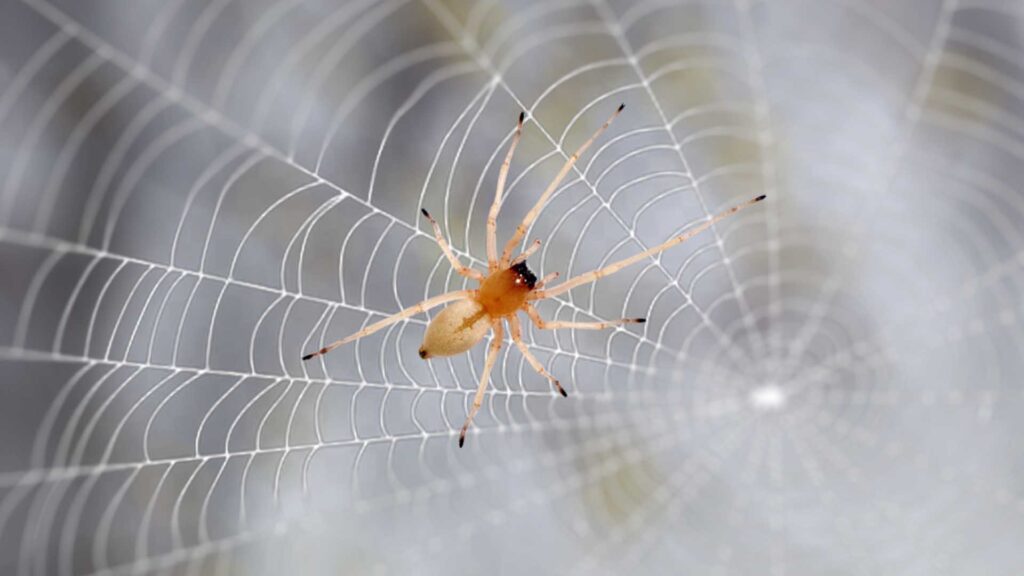
The Thick-Legged Sac Spider derives its name from its robust legs and sac-like silk structure it uses for shelter. Adorned with brown shades and subtle black markings, these spiders are nocturnal hunters.
They do not spin traditional orb webs but create silken tubes in hidden corners where they wait for unsuspecting insects. While their venom can be potent, they are not aggressive towards humans unless provoked. Their presence contributes to controlling pest populations, making them valuable to agricultural ecosystems.
Thick-legged Sac Spider (Cheiracanthium inclusum):
- Size: Small, typically measuring approximately 0.2 to 0.4 inches (5 to 10 mm).
- Color: Brown body with black stripes on the abdomen.
- Diet: Insectivorous; captures prey using silk.
- Habitat: Typically resides outdoors in vegetation, under leaves, and in grassy areas.
- Behavior: Can bite if threatened but is not considered dangerous to humans. Creates silken sacs for shelter.
Woodlouse Spider
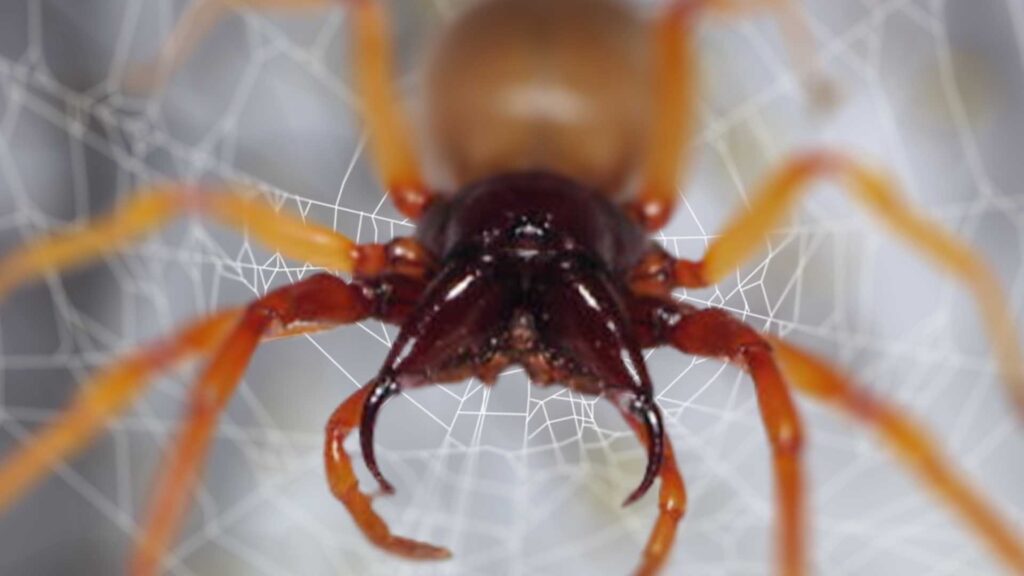
The Woodlouse Spider boasts an intriguing appearance with its deep reddish-brown body and contrasting black stripes. Despite their appearance, they do not spin webs to catch prey.
Instead, they are specialized predators of woodlice and sowbugs, creatures commonly found in damp environments. These spiders possess strong fangs that allow them to pierce the hard exoskeletons of their prey. Woodlouse Spiders exemplify the diversity of feeding strategies in the arachnid world.
Woodlouse Spider (Dysdera crocata):
- Size: Small, with a body length of about 0.3 to 0.4 inches (8 to 10 mm).
- Color: Brown body with black stripes on the abdomen.
- Diet: Specializes in hunting woodlice (pillbugs).
- Habitat: Often found in damp environments, such as gardens, leaf litter, and under rocks.
- Behavior: Non-aggressive; rarely bites. Uses pincers on front legs to catch woodlice.
Giant House Spider
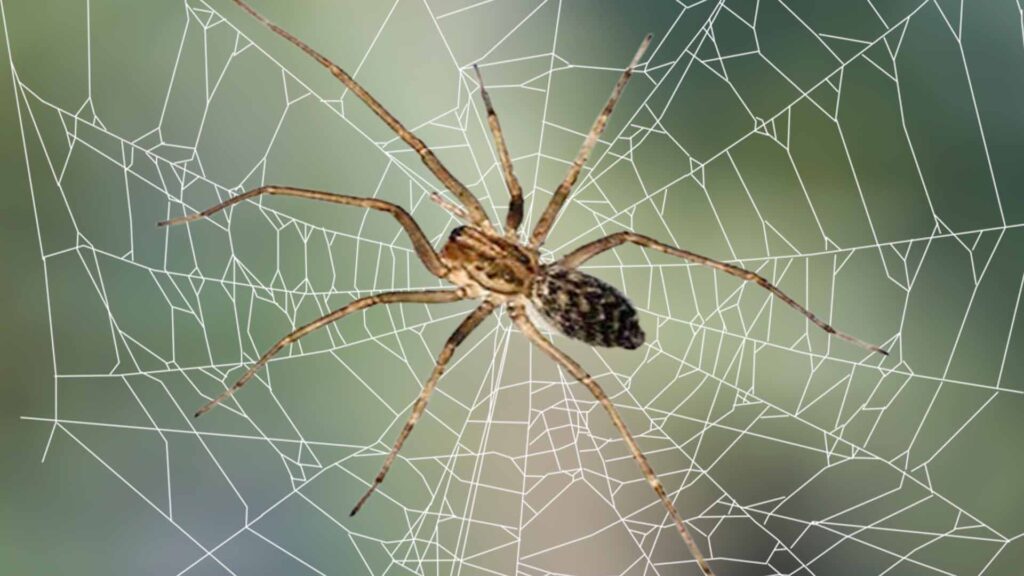
The Giant House Spider as the name suggests, can sometimes be quite large, causing alarm when spotted indoors. Adorned with brown hues and dark markings, these spiders are known for their swift movements.
Despite their intimidating appearance, they are generally harmless to humans and play a crucial role in managing indoor insect populations. Their tendency to wander into homes during mating season is a common occurrence, and their presence prompts discussions about coexisting with nature in urban settings. You may be intended to know about the Male vs Female Black Widow Spider.
Giant House Spider (Eratigena atrica):
- Size: Size: Large, boasting a leg span of approximately 2 to 3 inches (5 to 7.6 cm).
- Color: Brown body with black stripes on the abdomen.
- Diet: Carnivorous; preys on insects.
- Habitat: Commonly found indoors in homes and buildings, especially during the fall.
- Behavior: Not aggressive; rarely bites. Creates cobwebs in corners and crevices.
FAQ
Are Brown Recluse Spiders Poisonous?
Yes, Brown Recluse spiders (Loxosceles reclusa) are venomous, meaning they possess a venom that they use to immobilize and digest their prey. However, the term “poisonous” is not entirely accurate when referring to spiders. “Poisonous” typically refers to substances that are harmful if ingested or touched, whereas spiders are venomous organisms that deliver their venom through bites.
Are Spiders Aggressive?
Spiders, including the Brown Recluse, are not generally aggressive toward humans. Most spiders prefer to avoid contact with humans and will only bite if they feel threatened or cornered. Their primary goal is to catch and consume insects for sustenance rather than to engage in aggressive behavior towards larger animals.
What Are the Symptoms of a Brown Recluse Bite?
A bite from a Brown Recluse spider can lead to a condition known as necrotic arachnidism, which is characterized by tissue death around the bite site. Symptoms of a Brown Recluse bite may include:
- Initial Pain: The bite might not initially be painful, but within a few hours, pain and redness can develop around the bite area.
- Reddish Ring: A reddish ring or a bullseye-like pattern may appear around the bite site.
- Blistering: The bite can progress to the formation of a blister filled with fluid.
- Necrosis: In severe cases, necrosis (tissue death) can occur around the bite area, resulting in an open ulcer that may take weeks or months to heal.
- Fever and Chills: Some individuals might experience fever, chills, and general discomfort.
It’s important to note that not all Brown Recluse bites result in necrotic arachnidism, and many bites cause mild symptoms that resolve on their own. However, if you suspect you’ve been bitten by a Brown Recluse spider, it’s advisable to seek medical attention, especially if you observe any severe symptoms or signs of infection.
Conclusion
The world of spiders is a treasure trove of diversity, showcasing the evolution of specialized traits and strategies that allow these arachnids to thrive in a multitude of environments. The 7 brown spiders with black stripes on their backs provide a captivating glimpse into the vast realm of nature’s artistry. From the ground-dwelling prowess of the Wolf Spider to the aquatic grace of the Striped Fishing Spider, each species plays a unique role in maintaining the delicate balance of ecosystems. As we explore the intricate lives of these spiders, we gain a deeper appreciation for the complexity and beauty of the natural world.

